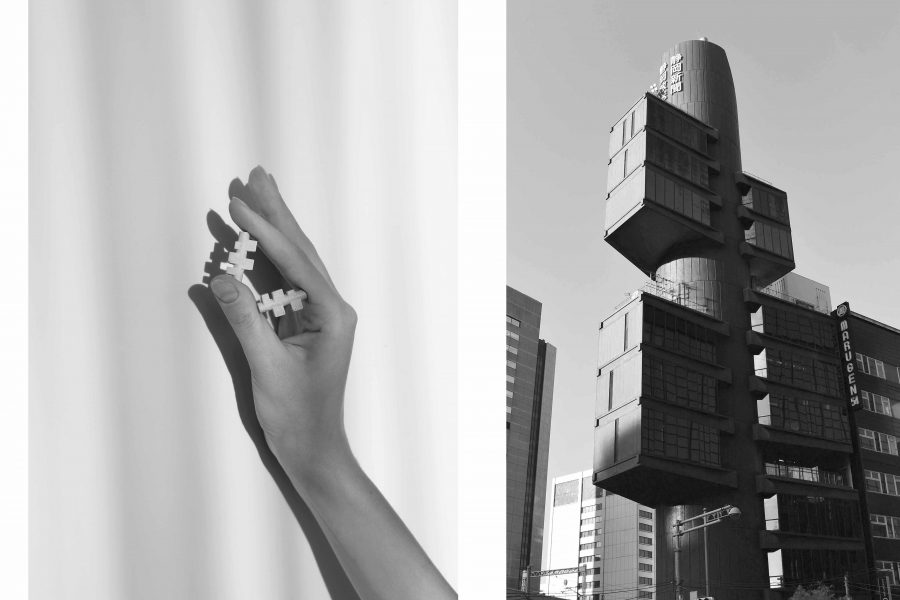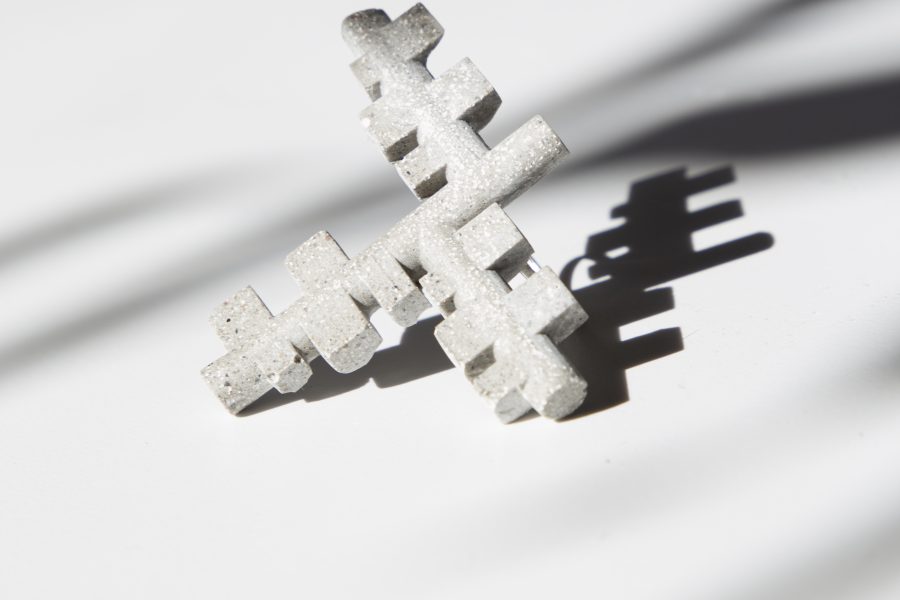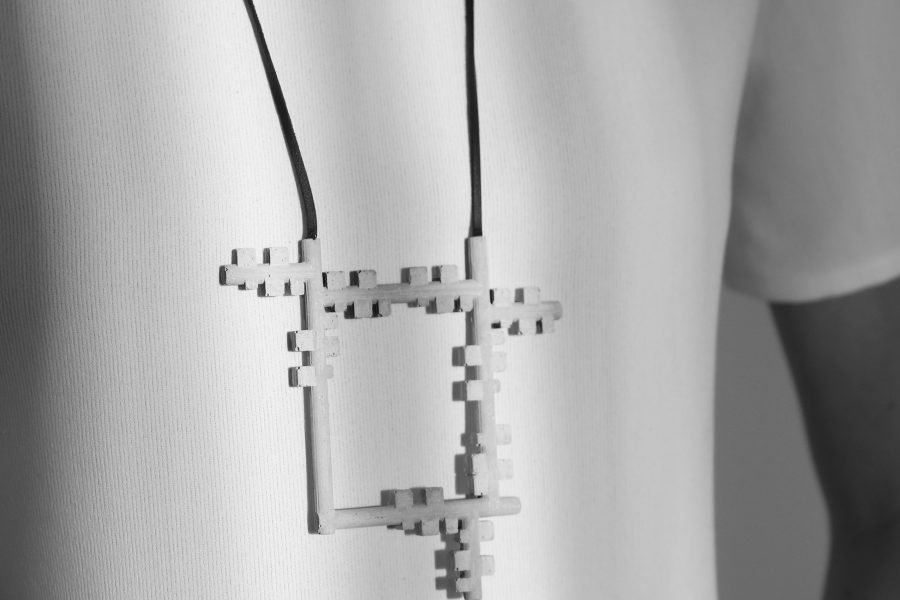Metabolism is the search for architectural connections between utopia and reality, an interpretation of the interaction between the city and human, aimed at creating flexible, changing parts of municipalities that can grow, change and die without disrupting the basic organism, the city, and adapting to societal needs. Once metabolists created cities that adapt to human needs, today CELSIUS 273 (designer Gerda Liudvinavičiūtė) has created a concrete jewelry collection based on the principles of metabolism, in which the exact details of the city adapt to the body, but retain the exact architectural form of the city. Metabolism was born after World War II, when a number of Japanese cities, including Tokyo, were bombed. The broken identity of the city cried out for a fresh attitude, and the uncertainty, in the subconscious of the people, sowed ideas that the city must be changing and adaptable to the needs of society. Metabolists have proposed the urban phenomenon of the future, trying to combine the constant urban transformation, evolving technologies, and the basic principles of Buddhism. This architectural movement changed the history and perception of the city. METABOLISM | BETWEEN UTOPIA AND REALITY is to draw attention to the leitmotifs of buildings, which change the architectural form and take on a different meaning, turning into jewelry objects. The collection invites to experience the primordial points of reference of metabolism, where simple urban motifs and forms turn into utopian or real urban components capable of unfolding in the context of urban transformation, and the city can indirectly influence man and his perception of the city.





